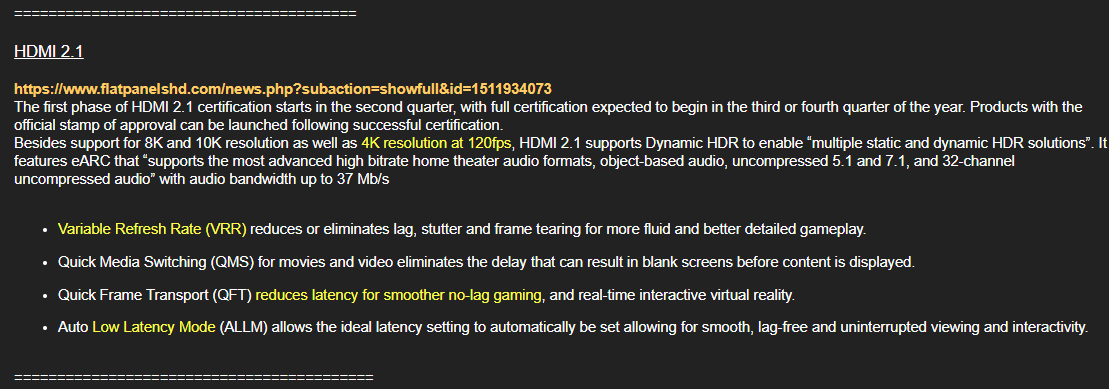BlindZenDriver
Limp Gawd
- Joined
- Mar 12, 2015
- Messages
- 147
I am a long time user of the 40" Philips BDM4065UC which was perfect when I went big monitor in 2015, in fact it is still great only it is missing HDMI 2.0 and only DP1.2 is also becoming an issue.
So I am looking for a replacement, but so far I am failing to find it. As I suspect other might be on the same quest perhaps we can hunt together
Here is my "must have" list:
- Must be a real monitor ie. 4:4:4 and RGB color grid.
- Minimum two DP 1.3 ports (full size or mini)
- HDMI 2.0 (two connectors preferred, one is minimum)
- VA or OLED (Loving the black of VA over IPS)
- No static dithering
- Quick response
And the nice to have(some almost "must have"):
- Freesync and much more than 60Hz
- HDR support and with many zones
- USB-C video input
- Non-glossy frame
- Adjustable stand
- VESA mount
- Reasonable price
Ie. I want a monitor that is great for gaming, but it must also be well suited for the more boring stuff - it does not have to be graphics artist worthy but text must be crisp.
If the monitor I want is out there do say, as mentioned I have not been able to find it. For a moment I thought the Philips 436M6VBPAB was it, but it unfortunately it turned out to ill suited for anything except gaming.
So I am looking for a replacement, but so far I am failing to find it. As I suspect other might be on the same quest perhaps we can hunt together
Here is my "must have" list:
- Must be a real monitor ie. 4:4:4 and RGB color grid.
- Minimum two DP 1.3 ports (full size or mini)
- HDMI 2.0 (two connectors preferred, one is minimum)
- VA or OLED (Loving the black of VA over IPS)
- No static dithering
- Quick response
And the nice to have(some almost "must have"):
- Freesync and much more than 60Hz
- HDR support and with many zones
- USB-C video input
- Non-glossy frame
- Adjustable stand
- VESA mount
- Reasonable price
Ie. I want a monitor that is great for gaming, but it must also be well suited for the more boring stuff - it does not have to be graphics artist worthy but text must be crisp.
If the monitor I want is out there do say, as mentioned I have not been able to find it. For a moment I thought the Philips 436M6VBPAB was it, but it unfortunately it turned out to ill suited for anything except gaming.
Last edited:
![[H]ard|Forum](/styles/hardforum/xenforo/logo_dark.png)
